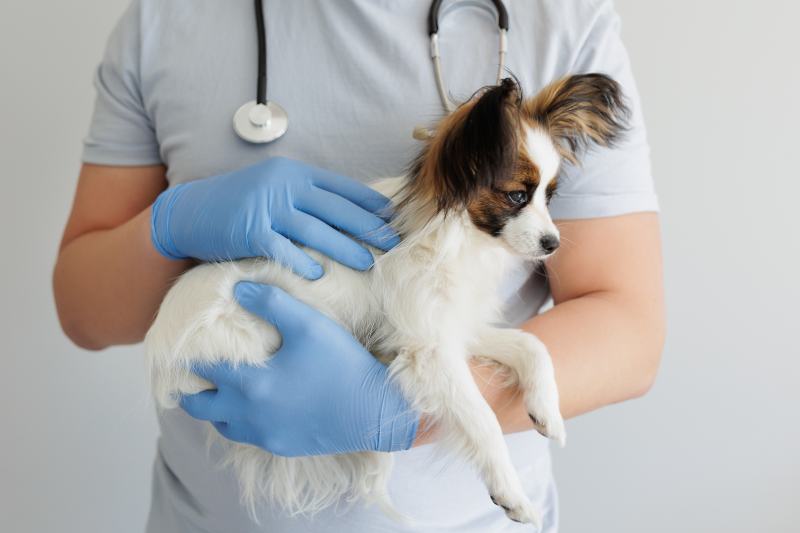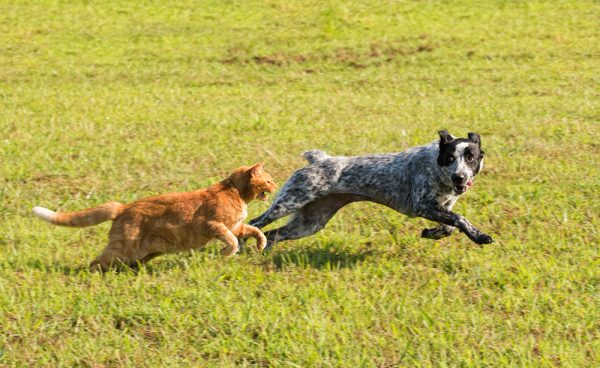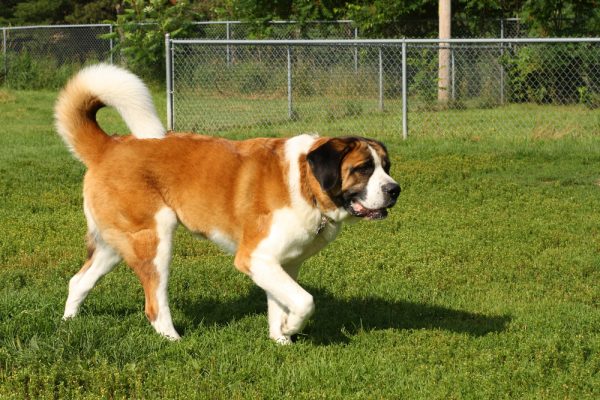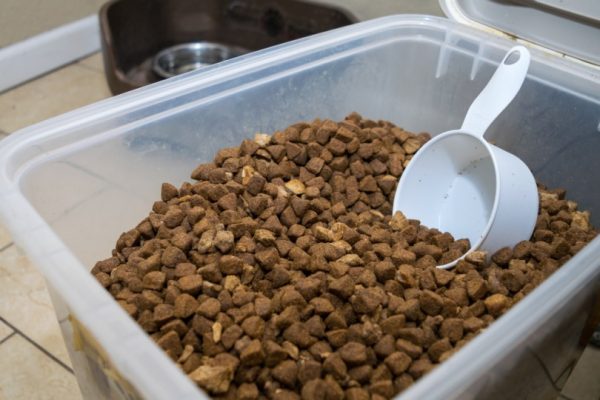As is the case in humans, various endocrine diseases have been described in dogs, with varying degrees of incidence. The endocrine system is centered around hormones, their specific actions, and, particularly in the case of endocrinology, whether they are secreted in appropriate amounts or concentrations to bring about their normal function.
Hormones are chemicals produced and secreted by endocrine glands that enter the bloodstream and travel through the body to a target organ. There, they serve as messengers of signaling molecules, regulating various physiological processes in the body, such as metabolism and growth and development.
We’ll touch on the various endocrine diseases that have been described in dogs but focus on the more commonly encountered endocrine disorders, such as hyperadrenocorticism (Cushing’s disease), hypoadrenocorticism (Addison’s disease), hypothyroidism, and diabetes mellitus.

The 10 Common Endocrine Diseases in Dogs
1. Hyperadrenocorticism (Cushing’s Disease) – Hormone Overproduction
Hyperadrenocorticism, also known as Cushing’s disease or hypercortisolism, is one of the most common endocrinopathies described in dogs. The condition is characterized by an excess of cortisol, hence the term hypercortisolism, which impacts various organ systems in the body.
- Signs
The most common clinical signs include polyuria (increased urination), polydipsia (increased thirst and water intake), and polyphagia (increased appetite). Other signs that owners might appreciate include weight gain, muscle atrophy, their dog developing a pot-bellied, bilaterally symmetrical alopecia (hair loss affecting both sides of the body equally) that tends to spare the head and legs, and skin changes.
Specific adrenal function tests, such as an ACTH stimulation test or low-dose dexamethasone suppression test (LDDST), are recommended in dogs to confirm the diagnosis. Further testing is then advised to differentiate between the different types of Cushing’s disease—namely PDH versus ADH and guide treatment recommendations.
- Treatment
When it comes to treatment, a few options exist. In the case of PDH, surgery can be performed to remove the pituitary gland. This is a highly specialized procedure, which is thus not widely available and can be quite costly and require ongoing supplementation of various hormones post-surgery. The more commonly used alternative is that of medical management to reduce the production of cortisol and limit the clinical signs associated with excess stress hormones.
ADH can also either be managed surgically or medically. Surgical removal of the affected adrenal gland is typically the preferred option when an adrenal tumor is present in one gland, and there is no evidence of spread to other parts of the body. That being said, an adrenalectomy can have various complications associated with the procedure, and because of such risks, some people opt to manage medically with trilostane instead.

2. Hypoadrenocorticism (Addison’s Disease) – Hormone Underproduction
Hypoadrenocorticism is another reasonably common endocrine disease of dogs. It is the result of a lack of cortisol, aldosterone, or both. Causes for such hormone deficiency can include an autoimmune process or destruction of the adrenal gland secondary to diseases such as granulomatous inflammation, a tumor, hemorrhage, or the use of drugs such as trilostane.
- Signs
Clinical signs of Addison’s disease can sometimes be challenging to appreciate, which is why the condition is often misdiagnosed, particularly early in the disease course. It has also, at times, been referred to as the “great imitator” because clinical signs can be vague, wax and wane, and resemble other disease processes. Examples of clinical signs include lethargy, diarrhea, vomiting, regurgitation, severe dehydration, profound weight loss, and a possible temporal association with stressful periods.
Dogs with Addison’s can also present in an Addisonian crisis, a life-threatening situation characterized by hypotension, hypoglycemia, and high potassium levels in the blood. These patients require urgent care to correct these abnormalities.
Clinicians need to have a strong index of suspicion and consider Addison’s disease a potential diagnosis, particularly in middle-aged dogs with compatible clinical signs. This will prompt appropriate further testing, such as the measurement of resting or basal cortisol levels to either rule out the diagnosis or see if it remains a possibility.
- Treatment
Treatment of Addison’s disease is typically very rewarding and associated with an excellent prognosis, albeit treatment is generally lifelong. Dogs with Addison’s can be treated in one of two ways. The first is with a drug with both glucocorticoid and mineralocorticoid activity, given daily.
The second option is using two separate drugs: desoxycorticosterone pivalate (DOCP) and prednisone or cortisone. DOCP helps with controlling potassium and sodium levels and is administered as an injection roughly every 28 days.
Prednisone or cortisone is used for glucocorticoid activity at dosages to replace cortisol. This second approach usually works out somewhat cheaper in the long term. Still, it does require a few veterinary clinic visits initially to establish the correct dosage and treatment interval for DOCP.
3. Diabetes Mellitus – Hormone Underproduction
As is the case with Cushing’s and Addison’s disease in dogs, diabetes mellitus is another common endocrine disease that affects our furry companions.
- Signs
Classical signs of this condition include increased water intake, urination, appetite, and, often, accompanying weight loss. Blindness associated with cataract development is another common reason for diabetic dogs to be presented to a veterinary clinic.
- Treatment
Management of diabetes in dogs is centered around insulin administration. In addition to giving insulin, consistency is vital when looking after a diabetic dog—keep the diet constant, keep activity levels the same from day to day, and ensure that insulin injections are administered every 12 hours.
Unfortunately, especially with improper management of diabetes, there are potentially life-threatening complications, such as diabetic ketoacidosis. Hopefully, with various advancements in treatment and monitoring strategies, such complications will become less common.

4. Diabetes Insipidus – Hormone Underproduction
This form of diabetes is less commonly identified in dogs than diabetes mellitus described above, which is why the latter has become synonymous with the term “diabetes” alone.
Diabetes insipidus is defined as either a lack of antidiuretic hormone/arginine vasopressin (AVP) or an inability of the kidneys to respond to this hormone. AVP has several vital functions in the body, one of which is to help concentrate urine. Thus, diabetes insipidus results in the production of large volumes of dilute urine, which prompts affected animals to drink large amounts of water to compensate.
- Signs and Treatment
After performing further testing to rule out other potential causes for such clinical signs, followed by a response test to administering a synthetic form of AVP, patients can be either managed by simply allowing ready access to water at all times or long-term use of desmopressin (a synthetic form of AVP) to mimic the effects of AVP.
5. Hyperthyroidism – Hormone Overproduction
Unlike in cats, hyperthyroidism is considered extremely uncommon to rare in dogs. The most common cause of hyperthyroidism in dogs is thyroid carcinoma (a cancerous process involving the thyroid gland), producing excess thyroid hormones.
- Signs
This excess causes an increased metabolism, and clinical signs, which can include weight loss despite a healthy appetite, increased excitability, polydipsia, polyuria, and even a palpably enlarged thyroid gland on the underside of the neck. Some cases can present with difficulty swallowing, a change in the character of bark, and signs of coughing because of the space-occupying nature of the thyroid tumor.
- Treatment
Treatment options can include either a combination of surgery, chemotherapy, cobalt irradiation, or radioactive iodine therapy. Unfortunately, given that most cases of canine hyperthyroidism are associated with thyroid carcinoma, the long-term prognosis is typically poor to even grave.
Medication can control the clinical signs associated with excess circulating thyroid hormones; however, such drugs won’t prevent tumor growth or spread.
If you are concerned about the health and well-being of your pet, seek veterinary advice for the best course of action.
If you need to speak with a vet but can't get to one, head over to PangoVet. It's an online service where you can talk to a vet online and get the personalized advice you need for your pet — all at an affordable price!
6. Hypothyroidism – Hormone Underproduction
Hypothyroidism is another common hormonal disease affecting dogs. This condition results from a deficiency in circulating thyroid hormones in the body. Thyroid hormones impact most body organ systems and, in particular, are essential in maintaining normal metabolism. Two types of hypothyroidism have been described: acquired and congenital.
- Signs
Clinical signs include lethargy, weight gain, obesity, bilaterally symmetrical alopecia, and “heat-seeking” behavior. In the early stages of the disease, clinical signs can be subtle, variable, and typically non-specific, given that the lack of thyroid hormones affects the functioning of all organ systems.
Diagnosis requires demonstrating low circulating thyroid hormone concentrations in conjunction with an inappropriately low thyroid-stimulating hormone (TSH). In patients with low thyroid hormone concentrations and normal to even elevated TSH levels, it is essential to consider non-thyroidal illness before considering the possibility of hypothyroidism.
- Treatment
Hypothyroid dogs require daily synthetic thyroid hormone supplementation to manage the deficiency and associated clinical signs.

7. Primary Hyperparathyroidism – Hormone Overproduction
Primary hyperparathyroidism is defined by excess parathyroid hormone (PTH) produced by one or more parathyroid glands. This excess PTH results in hypercalcemia, or too much calcium circulating in the body.
- Signs
Hypercalcemia can affect the gastrointestinal tract, urinary tract, and nervous system. However, some patients with primary hyperparathyroidism can have no clinical signs at diagnosis.
- Treatment
Treatment options include surgical removal of the parathyroid gland/s producing too much PTH or heat or ethanol ablation/destruction of the parathyroid gland/s in question.
8. Hypoparathyroidism – Hormone Underproduction
Hypoparathyroidism refers to a deficiency in PTH. Such deficiency can arise secondary to trauma to the neck, and it can be the result of damage to the parathyroid glands during surgery to remove either a thyroid or parathyroid gland, or, in some cases, it may happen spontaneously for reasons that are poorly understood.
- Signs
A deficiency of PTH leads to hypocalcemia (low calcium levels), which can bring about clinical signs of tetany, cramping, changes in behavior, seizure activity, and even death.
- Treatment
Treatment of such cases entails calcium and vitamin D supplementation.

9. Acromegaly – Hormone Overproduction
Acromegaly is defined as a condition resulting from excessive growth hormone. This disease is uncommon in dogs, and when it is diagnosed, it is most commonly identified in older, intact female dogs due to increased growth hormone production during either a specific phase of their estrus cycle or pregnancy.
Another possible cause is excess growth hormone production secondary to prolonged administration of progestins. It is rare for dogs to present with acromegaly secondary to growth hormone secretion by either benign or malignant mammary gland tumors.
- Signs
Acromegalic dogs may develop skin folds around the head, neck, and extremities because growth hormones can stimulate soft tissue and bony overgrowth. Affected dogs can also have big paws, thickening of soft tissue within the oral cavity, and organ enlargement. Excess growth hormone can sometimes contribute to insulin resistance, resulting in concurrent diabetes mellitus.
Such concurrence is more common in cats but still possible in dogs. Clinical signs attributable to concurrent diabetes mellitus include polyuria, polydipsia, polyphagia, and weight gain.
- Treatment
Given the most common causes highlighted above, treatment typically entails discontinuing progesterone administration (if being done).
10. Pituitary Dwarfism – Hormone Underproduction
Pituitary dwarfism is a rare clinical syndrome characterized by congenital growth hormone deficiency. It has been described most commonly in German Shepherd Dogs, Czechoslovakian Wolfhounds, and Saarloos Wolfhounds and is considered an inherited disorder.
- Signs
Clinical signs are usually apparent from 2–5 months of age. They can include growth retardation with proportionate features, retention of puppy haircoat, alopecia, and a persistent estrus (prolonged heat cycle). In dwarfs that have concurrent atlantoaxial instability, clinical signs might include weakness, an uncoordinated gait (ataxia), and star gazing.
A DNA test is available to screen for the genetic mutations identified as associated with this disease in certain breeds. Treatment can include supplementing growth hormone, if necessary, using pig-derived growth hormone.
- Treatment
Unfortunately, even with treatment, the long-term prognosis is considered guarded, and survival is limited by complications such as progressive kidney disease/failure and neurological abnormalities.


Conclusion
Endocrine diseases are a common reason for the presentation of dogs to veterinary clinics worldwide. While some clinical signs described above for each condition are considered hallmark features, performing appropriate further testing under the right conditions is essential to confirm a diagnosis before starting treatment.
Even though some of the treatments listed above can be very helpful in managing or limiting the clinical signs associated with the endocrine disease in question, it is crucial to understand that such treatments can also have significant side effects.
- Related read: Hyperthyroidism in Dogs
Featured Image Credit: KongNoi, Shutterstock


















